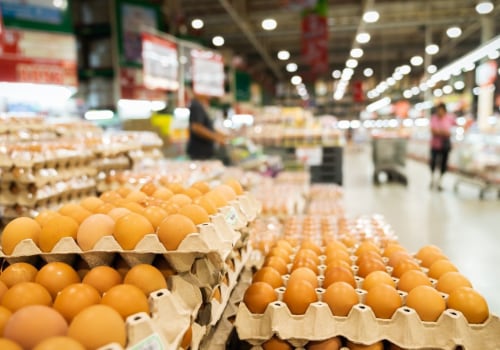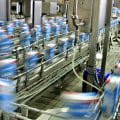Types of food processing According to the FAO (United Nations Food and Agriculture Organization), processed foods can be classified into three types, namely. Secondary food processing is the process of using ingredients produced through primary food processing to create ready-to-eat foods. An example of this is using flour to make dough and then baking the dough to create bread. Other examples include fermenting grape juice with wine yeast to create wine and using ground beef to make sausage.
In other words, cooking is a general term for food production. Food production also covers the other steps needed to create a meal from edible products, such as cutting and marinating meat before grilling it. Emulsification, the process of completely mixing two or more liquids, is a process that can be used for both food processing and food production. Using a commercial emulsifier to make non-perishable salad dressings is one way to use it in food processing, while breaking an egg into a bowl with flour, milk, sugar and other ingredients to make pancake batter is the use of emulsification in food production.
There's no question that at least some processed foods are found in most people's kitchens. They can save time preparing meals, and some processed and fortified foods provide important nutrients that you wouldn't otherwise get in a busy household or with a limited food budget. From a nutritional standpoint, processed and even ultra-processed foods can provide key nutrients. Some nutrients, such as proteins, are naturally retained during processing, and others, such as B vitamins and iron, can be added back if lost during processing.
Fruits and vegetables that freeze quickly after harvest can retain most of the vitamin C. . An ultra-processed food that contains an unevenly high proportion of calories and nutrients may be considered unhealthy. For example, research supports the association between high consumption of sugar-sweetened beverages and an increased risk of obesity, diabetes and heart disease.
However, some processed foods that contain beneficial nutrients, such as olive oil or rolled oats, have been linked to lower rates of these chronic diseases. Food processing is a spectrum that ranges from basic technologies such as freezing or grinding, to the incorporation of additives that promote shelf stability or increase palatability. As a rule, it is optimal to emphasize unprocessed or minimally processed foods in the daily diet. That said, the use of processed foods is the consumer's choice, and there are advantages and disadvantages that come with each type.
The nutrition label and the list of ingredients can be useful tools in deciding when to include a processed food in the diet. There is evidence that shows an association with certain types of food processing and with poor health outcomes (especially highly processed or ultra-processed foods). This association applies primarily to ultra-processed foods that contain added sugars, excess sodium, and unhealthy fats. Cereals, such as wheat, can be ground to remove fibrous husks.
Peels contain most of the plant's dietary fiber, B vitamins, phytochemicals and some minerals. That's why products such as white bread are less nutritious than whole-grain varieties, even if they have been artificially fortified with some of the nutrients that were lost after milling. Before canning or freezing a food, it is usually heated very quickly with steam or water. Water-soluble vitamins, including vitamin C and B complex, are sensitive and easily destroyed by bleaching them.
The nutritional value of a food is preserved when it is frozen. Any loss of nutrients is due to processing before freezing and cooking after the frozen food has been thawed. Pasteurization involves heating liquid foods such as milk and fruit juices to specific temperatures to destroy microorganisms. The nutritional value of milk is generally not affected.
In the case of pasteurized fruit juices, there may be some loss of vitamin C. Drying foods such as fruits can reduce the amount of vitamin C they retain, but it can also concentrate other nutrients, in particular the fiber in plant foods. Dehydration of food also makes food products more energy dense, which can contribute to weight gain. There are also food preservation methods that can be done at home using specialized equipment.
Often referred to as pre-cooked or prepared foods, processed foods are suggested to contribute to the obesity epidemic and to the increase in the prevalence of chronic diseases such as heart disease and diabetes. Tertiary food processing is the large-scale manufacturing of ready-to-eat foods, such as frozen pizzas and packaged snacks. Many different food preservation methods are used, some of which can be done at home and others that require the use of commercial food manufacturing equipment. This includes moisture inside food, evaporation, and contact between food tissues and oxygen, causing oxidation.
Companies in the food manufacturing industry are required to comply with health and safety laws enforced by the countries in which they operate and sell their products, such as the United States Food and Drug Administration (FDA). Because food begins to deteriorate and lose nutrients as soon as it is harvested, even the apples in the produce aisle undergo four or more processing steps before being sold to the consumer. Commercially, the main reasons for processing foods are to eliminate microorganisms (which can cause diseases) and extend their lifespan. The mechanisms that explain the association between the consumption of ultra-processed foods and chronic diseases are not yet clear.
That is why, in practice, it is useful to differentiate between the different degrees of food processing. The purpose of many of these food preservation methods is to completely prevent air from reaching the food and to cause a chemical reaction that causes it to deteriorate. During the cultivation, harvest, storage and preparation of food, a variety of things can occur that can affect its nutritional content. Everything from animal husbandry for the meat and dairy industries to the commercial production of mixtures of spices, flours and other packaged ingredients, to the production and packaging of ready-to-eat foods, falls within the scope of food manufacturing.
.







Leave a Comment